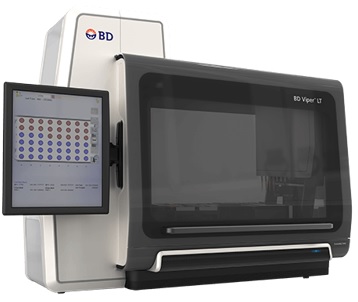BD Onclarity HPV Assay - P160037
This is a brief overview of information related to FDA's approval to market this product. See the links below to the Summary of Safety and Effectiveness Data (SSED) and product labeling for more complete information on this product, its indications for use, and the basis for FDA's approval.
Product Name: BD Onclarity™ HPV Assay
PMA Applicant: Becton, Dickinson and Company
Address: 7 Loveton Circle, P.O Box 999, Sparks, MD 21152
Approval Date: February 12, 2018
Approval Letter: Approval Letter
What is it? The Becton Dickinson (BD) Onclarity HPV Assay is an automated laboratory test used on the BD Viper LT system. This test detects DNA (deoxyribonucleic acid) from 14 high risk human papillomavirus (HPV) types that are associated with cervical cancer. The test specifically identifies HPV types 16, 18 and 45 while concurrently detecting types 31, 33, 35, 39, 51, 52, 56, 58, 59, 66 and 68.
Human papillomaviruses (HPVs) are a group of over 150 related viruses. Each HPV virus in this large group is given a number which is called its HPV type. Some HPV types can lead to cancer. HPV is transmitted through intimate skin-to-skin contact.
How does it work? Specimens containing cervical cells are collected during a Pap test and loaded onto the ViperLT system. DNA is then separated from those cells, and the device determines the presence or absence of high risk HPV DNA.
When is it used? A physician may order an HPV test to collect information regarding a woman's risk for cervical cancer. An HPV test is used in conjunction with the physician's assessment and professional guidelines to guide patient management.
What will it accomplish? Test results can provide the physician with information regarding a woman's risk for developing cervical cancer. A negative test result is useful in ruling out a potentially cancer-causing infection. Positive results can guide different follow-up procedures for the patient depending on which HPV type is detected.
HPV negative cancers of the cervix do occur in rare circumstances. Also, no cancer screening test is 100% sensitive.
When should it not be used? The BD Onclarity HPV Assay should not be used:
- For determining the need for treatment (i.e. cutting (excisional) or using a laser (ablative) treatment of the cervix) in the absence of abnormal cell growth on the cervix (cervical dysplasia).
- For women who have undergone hysterectomy.
- With samples other than those collected by a clinician by lightly scraping or brushing off the cervix and placed in the BD SurePath™ Collection Vial.
The use of this test has not been evaluated for women with prior ablative or excisional therapy, or who are pregnant.
Additional information (including warnings, precautions, and adverse events): The Summary of Safety and Effectiveness Data (SSED) and labeling are available online.
Other Resources:
- Centers for Disease Control and Prevention Human Papillomavirus Information
- National Cancer Institute: HPV and Cervical Cancer
- The American Society for Colposcopy and Cervical Pathology (ASCCP)
- American Cancer Society

